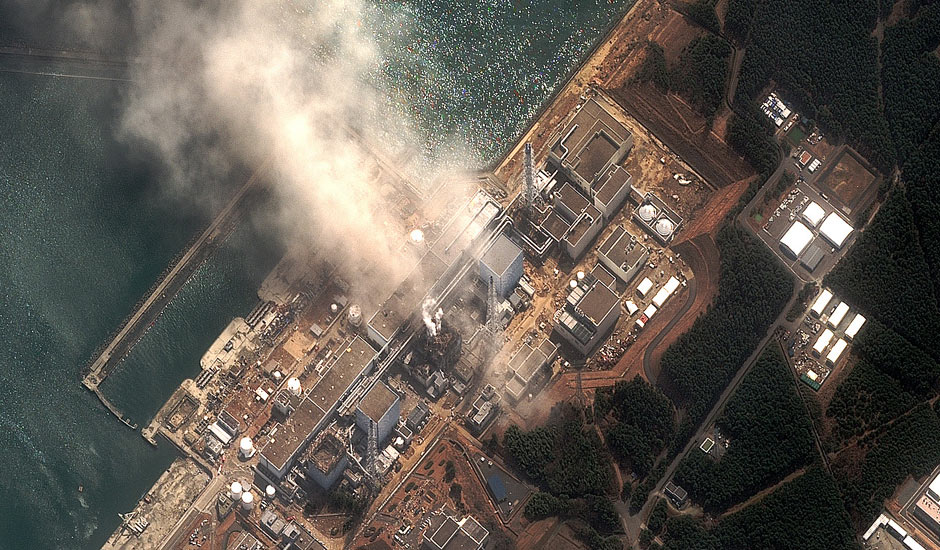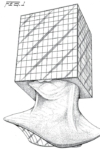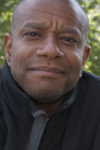“The details are being investigated.” – Japanese Radio Broadcast, August 7th, 1945
As William Vollmann recently trekked, by car and train and foot, through a wrecked Northern Japan, speaking with those displaced and decimated by the earthquake and tsunami, he tried to focus his questioning towards the nuclear catastrophe unfolding on the shores of the pacific, only a few miles ahead. He found, alarmingly (but not without reason), that the people he encountered were more concerned with immediate matters – the reclamation of belongings, homes, a semblance of a daily routine. Little outrage or even attention could be directed towards an immediate and uncontrolled threat: the meltdown of the Fukushima nuclear plant. As he traveled, thousands of gallons of radioactive material were being released into the ocean, directly endangering the fishing-stock and coastline. The irony of the situation could no longer be ignored. Rather bluntly, seemingly frustrated, he asked, “Mrs. Hotsuki, here is a question that baffles me. As a citizen of the country that dropped atomic bombs on Japan, I wonder how this could have happened in your country twice. First you were our victims, and then, it seems, you did it again to yourselves.”
“You did it again to yourselves.” It’s a harsh indictment of a nation facing crisis on many fronts. The country that received untested nuclear explosions, had two cities destroyed, then rebuilt, then powered them by the same fission that made their destruction, had now unleashed more radioactivity on itself, through carelessness. Japan was seemingly poisoned by their inability to question whether what they were doing was safe or just expedient.
The footage of people trapped under crumpled wooden structures, the piles of rubble that were once homes, Geiger counters pointed into the wind, all set to a backdrop quite like a Hiroshige print – sympathizing with Vollmann, how could one not see Hiroshima and Nagasaki in the wreckage?
* * *
As pieces of long-form journalism, there are notable similarities between John Hersey’s Hiroshima, published by The New Yorker (which devoted an entire issue to it) a year after the atomic bombings, and William Vollmann’s Into the Forbidden Zone: A Trip Through Hell and High Water in Post-Earthquake Japan, published in the midst of the disaster and more than sixty years after Hersey. Both were published in the most accessible and instant form available at their publication- Hiroshima in a wide-circulation magazine, Forbidden Zone in an electronic download. Both were written by veteran war correspondents- Vollmann spent considerable time in the Balkans, Hersey in Sicily and Guadalcanal. Both report on Japan. Both reporters are deeply knowledgeable about Japanese culture and history (Hersey grew up in the region, Vollmann has written several books about it). However, the differences in tact and tone of the pieces reflect the passage of time, and unfortunately, that the hour is already terribly late. We are amidst the peril of atomic energy, and no matter how urgent the reporting, no matter how dire the warnings, we, like the journalists, are bound to wander through its devastation.
Hiroshima aimed to report on the human loss of the nuclear event, the fire, the burns, and the resulting miasmatic disease. Already, the facts of the explosions were being published and touted by American functionaries. Already, the science and unintended results of the explosion was proving ample for study by the Army. What wasn’t known was how it felt to be thrown from your home by a blinding flash of light, what it was to look at a field of soldiers with their eyes melted, to sit under a laurel tree and listen as a city silently died. Hersey’s account provided that, in a strict and novel voice, devoid of anything but the humanist report. It seems the closer to the disaster we get, the more of the “truth” of the matter dissolves. The motive of the bombing, the context of the war, and the politics behind the decision lose all relevance. All there is is a simple feeling of resignation. As Mrs. Nakamura, a poor tailor’s widow, tells Hershey after he asks if she is mad at the United States, shaking her head, “Shikata Ga-nai,” what happened “couldn’t be helped.”
But just like the horrors and images of a tragedy outlive our attention, as will these nuclear particles. So contends Vollmann, as he mostly avoids a recounting of the personal stories of survival and loss. Now we have the digital world to tell us what it looks like when your house is destroyed with you inside, now we know what mass-death looks like. More invisible are the threats posed by something like radioactivity, whose poison manifests itself through slow illness and barren land. As explosions from the reactor lessen, the leaks remain, and the end of the Fukishima ordeal is not remotely in sight. Vollmann declares, “In case you have not noticed, I considered this matter of the reactor to be the real story.” While Hersey’s report is itself an indictment of nuclear warfare, it was written before we were able to market and rationalize our nuclear discoveries, harnessing them for nuclear energy. In Hershey’s time, nuclear power was a shattered city. For him, the people were the story.
Vollmann then has to address his own beliefs before continuing his narrative, “The reason that I unalterably oppose nuclear power is so obvious to me that I remain astounded that everybody on earth is not likewise against it: Dangerously radioactive nuclear wastes must be stored and guarded for periods insanely in excess of any civilization’s frame of reference. “ In other words, the waste of our invention will outlive us, while the promise of its power will be quickly spent.
* * *
The challenge of investigative journalism in the intervening decades has grown considerably. Where Hersey could catalyze a movement with a portrait of a place in crisis, its visible qualities, Vollmann must focus on the invisible. Vollmann must discuss what conventional forms of documentation can’t cover (that the Japanese are being invisibly, silently poisoned). Investigative journalism, this intrepid profession, has lost the damning device that it drew power from- the ability to astound. Bereft of spectacle, it must present facts and statistics and reports, all things that are happening obscurely, not things that have disastrously occurred. In turn, Vollmann straddles the line between reporting on spectacle, which we know about, and are quickly tired of, and our modern lives, which are built on an energy infrastructure that will destroy us.
Vollmann wanders a gentle countryside, the forbidden zone, which was mostly untouched by the tsunami, besides its dying nuclear plant. Vollmann sees nothing notable beyond the Japanese roadblock, abandoned towns, and abandoned pets, but beyond this lies an invisible and coy death. Which is exactly what we are most comfortable with, and how the death of the twenty-first century will most probably resemble- abandoned towns reeking of manmade illness, not unlike the city Hersey wandered at the dawn of our nuclear age. The spectacle of explosion is good for a statement and bad for business, and as long as the reactor silently poisons Japan, nuclear power will continue to be used and somehow taken seriously. Vollmann’s question about Hiroshima and Nagasaki is answered in a way reflective of this narrow fixation on localized destruction, “We don’t know much about the nuclear bomb,” explained the older woman. “They’re pretty far from here, Hiroshima and Nagasaki, and we just heard from our parents that some plane came over and so forth. They didn’t talk about it.” “Why didn’t they?” “Unless you go to that area and see that atomic site, then maybe you have no interest in it.”
After the dropping of the bomb, many of the Hibakusha, survivors, were ostracized and looked down upon by their countrymen. Worried about lingering health defects and the general unpleasantness associated with that moment, Hibakusha had to wait years to get formal recognition for their ailments and support from the government. Only when fallout from an American nuclear test irradiated a group of Japanese fishermen, and a vibrant Japanese press reported on their illness, did any progress get made helping the irradiated of 1945.
Vollmann traveled to Hiroshima to find it in spring, and a general nonchalance around the memorial site, while he himself found it hard to ignore the path we have taken since August 6th. Across from the memorial, women drink coffee serenely, and in the northern part of the country, men race to their certain deaths in an attempt to only stem a flow of nuclear material that will outlive us all. Vollmann warns, “But while you read this story, please consider how many more times you desire the Fukushima reactor disaster to occur. Should you come down on my side, consider relocating upwind.” His resignation is indicative of how little he believes investigative reporting can move us to action – it can only move us upwind.
The New Yorker has not again devoted an entire issue to just one article, but, a long piece, excerpted in three regular issues in the early eighties, Jonathan Shell’s “The Fate of The Earth”, also dealt with the risks of nuclear technology. Shell was rallying against an imminent nuclear war, and it worked to energize, if only for a moment, nuclear dissent in the United States. Hersey added a chapter to his book around the same time, returning to the lives of the survivors of the bomb. The same woman, Mrs. Nakamura, who felt that the bombing couldn’t be helped, had internalized her experience to the point that “the bombing almost seemed a natural disaster- one that it had been her bad luck, her fate (which must be accepted) to suffer.”
Japan is taking steps to remove itself from reliance on nuclear power, but Iran moves forward with theirs. In India, they are fighting in the streets about it. Unlike Mrs. Nakamura, let us not confuse manmade with natural disasters. When the line is now so thin, let us remember who is squarely responsible.
In 1989, Marilynne Robinson published one of the finest pieces of investigative journalism about nuclear pollution, Mother Country. It describes how Britain, the world’s largest producer of Plutonium, had been taking nuclear waste and venting it into the air and the Irish Sea. The book was banned in Britain. She finishes it lamenting the fact that somehow, knowing we are poisoning ourselves, we are able to allow it. We are able to rationalize anything that is profitable.
But there is a real world, that is really dying, and we had better think about that. My greatest hope, which is a very slender one, is that we will at last find the courage to make ourselves rational and morally autonomous adults, secure enough in the faith that life is good and to be preserved, to recognize the grosser forms of evil and name them and confront them. …We have to walk away from this road show, consult with our souls, and find the courage, in ourselves, to see, and perceive, and hear, and understand.
Hersey and Vollmann saw, perceived, and heard, with great skill, but unless there is the courage to act, the whole world will soon be irradiated.
This post may contain affiliate links.








